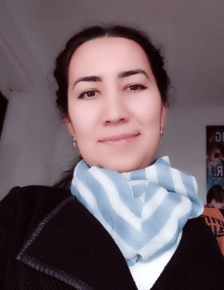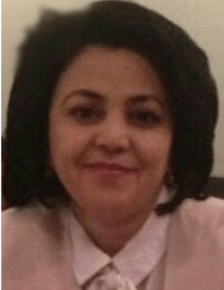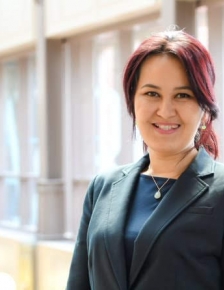|
Week 2
TESOL 6 Principles: Principles 3-4
|
|
Section and Trainer(s)
|
Time
|
Instructions
|
Materials
|
Notes
|
|
Welcome and Overview
Trainer(s): Apa Dildora
|
9.00-9.05
|
- Give a general welcome to Week 2 of the 2-week workshop.
- Announce any “housekeeping items” if necessary.
- Change table groups. Have participants introduce themselves to the other members of their new table-group.
|
|
Change table groups. (quickly). Use a line up by birthday or other way to mix groups
|
|
Today’s Agenda and Today’s Objectives
Trainer(s): Apa Dildora
|
9.05-9.10
|
- Present the objectives for week 2.
- Learn how to prepare lessons with clear language objectives and share them with their students
- Learn how it is important to adapt their teaching when it is necessary
- Learn how to provide specific feedback to students in a positive and effective way
- Learn to use a variety of assessments to inform teaching and improve learning
|
|
|
|
Activity: Penny for Your Thoughts
Trainer(s): Gulnora
|
9.10-9.25
|
- Introduce the Penny for Your Thoughts activity. Tell participants the purpose is to use a community building activity to get to know some things about each other. Tell them to be thinking about how they could adapt the activity for their own classroom (community building or skill based).
- Direct participants to the pennies on their table.
- Discuss the directions for the activity.
1. Pick up a penny on your table.
2. Look at the year it was produced.
3. Think of an important event in your life from that year that you feel comfortable sharing with others (if it is a year before you were born, you can exchange your penny with another person).
4. Share the event with your table-group.
- Model the activity by doing a think-aloud with two different pennies.
* My penny is from 2001. That was an important year for me because I graduated from university that year and got my first teaching job.
* 1987, well, that was a few years before I was born, but it is still an important year in my life because it’s the year my parents got married.
- Monitor and assist with the activity.
Ask participants to share out interesting
- Monitor and assist with the activity.
Ask participants to share out interesting
- Emphasize the importance of ongoing community building with activities such as these
|
- PPT 4–5
- at least one penny per participant
|
- Put pennies on the tables before the workshop.
|
|
Activity: Turn and Talk / Activity Tracker: Penny for Your Thoughts
Trainer(s): Gulnora
|
9.25-9.35
|
- Re-introduce the Turn and Talk / Activity Tracker activity. Have them refer to the Activity Tracker handout from Week 1.
- Give participants 5 minutes to complete the activity as you monitor and assist.
- Ask participants to share out as time allows.
|
- PPT 6–7
- Activity Tracker handout
|
|
|
Review of Principles 1 and 2
TRUE/FALSE whiteboards
Trainer(s): Umedjon
|
9.35-9.40
|
Tell participants we will briefly review Principles 1 and 2 from last week. Encourage them to look back through their handouts with you as you review.
Last week we started with the core, or center, of the 6 PS:
* Principle 1: Know your learners.
We did a Jigsaw Reading and Note Taking activity to review the characteristics of specific age groups. We also did a Find Someone Who . . . activity as an example of a lesson that can help you gather information about students.
Then, we moved on to Principle 2
* Principle 2: Create conditions for language learning.
We started with a Personal Inventory as a form of self-reflection and then used Think-Pair-Share groups as a way to discuss best conditions for language learning. Then we played Multiple intelligences game “Know your intelligence type”.
Today, we will continue with Principles 3,4,5, and 6:
- Principle 3: Design High-Quality Language Lessons.
- Principle 4: Adapt lesson delivery as needed.
- Principle 5: Monitor and assess language development.
Our last P is what holds all of the 6 Ps together.
- Principle 6: Engage and collaborate within a community of practice
|
|
|
|
Principle 3: Design High-Quality Language Lessons
Trainer(s): Apa Dildora
|
9.40-9.45
|
- Introduce Principle 3: Design high-quality lessons plans.
- Discuss how teachers teach best when they design high-quality language lessons.
|
|
|
|
Principle 3 – Best Practice 1: Teachers prepare lessons with clear language objectives and share the objectives with their students.
Trainer(s): Apa Dildora
|
9.45-10.05
|
- Introduce Best Practice 1: Teachers prepare lessons with clear language objectives and share the objectives with their students.
- Discuss the four questions teachers need to ask when they are developing objectives. ●What do my students specifically need to understand when they listen?
●What do my students specifically need to say when they speak?
●What do my students specifically need to understand when they read?
●What do my students specifically need to write about?
- Introduce and discuss language functions as what students DO with the language using these examples:
* Orally name five things you need to take on a vacation.
* Orally compare the weather in your city to the weather in Paris.
* Describe what is happening in a picture of a beach in five or more sentences.
* Sequence the events of a story you read about Olga’s trip to Samarkand.
Contrast language functions with forms by saying that language forms are the structures (grammar) and vocabulary that students need to perform the function. Use the “Orally compare the weather in your city to the weather in Paris” example to discuss
|
|
|
|
Principle 3 – Best Practice 2: Teachers use oral and written English that students can understand.
Trainer(s): Gulnora
|
10.05-10.20
10.20-10.30
|
- Introduce Best Practice 2: Teachers use oral and written English that students can understand.
- Discuss the kinds of tools teachers can use to help students understand.
* Scaffolding (hand and face expressions, pictures, simple English, common vocabulary, emphasizing important words)
* Tools for Explaining (maps, charts/graphs, graphic organizers, pictures, real objects, video/audio clips, highlighted text, bilingual glossaries, picture dictionaries)
* Demonstrations (modeling good English, role playing an activity, helping students do written exercises with think-aloud examples, sharing good examples of essays, projects, etc.)
- Ask participants to share other ideas.
- Discuss ways teachers can adapt their language.
* Speak clearly.
* Speak at a slower speed for beginner students and a normal speed for advanced students.
* Repeat information in different ways.
* Use hand and face expressions.
* Stress important words
* Write key words when speaking.
- Ask participants to share other ideas.
- Discuss ways teachers can give clear directions.
*Use the same classroom management and routines every day.
*Give simple directions with patterned language (hand clapping, rhymes, hand and face expressions, signals).
*Divide tasks into smaller parts.
*Model every part of a task.
7. Ask participants to share other ideas.
Break
|
|
|
|
Principle 3 – Best Practice 3: Teachers have active classrooms where students can actively practice English with interesting topics.
Trainer(s): Umedjon
|
10.30-10.50
|
- Introduce Best Practice 3: Teachers have active classrooms where students can actively practice English with interesting topics.
- Discuss the different kinds of techniques that teachers can use to give students more opportunities to participate.
* Be sure that you do not just rely on “good speakers” (Numbered Heads Together, Think-Pair-Share).
* Ask follow-up questions (Say more on that . . . Do you agree or disagree with that? . . . Why do you think that? . . . Explain why you chose this answer.).
- Ask participants to share other ideas.
- Discuss the different kinds of techniques that teachers can use to ensure active participation throughout all four parts of a lesson: Starting, Building, Applying, Concluding.
* Starting (Roving Charts, K-W-L, Four Corners, Anticipation Guides, Language Experience Approach)
* Building (Sorting Tasks, Sentence Frames, Directed Reading-Thinking Activity, Reciprocal Thinking, Concept Mapping, T-Charts)
* Applying (Dialogue Journals, Readers’ Theater, Text to Graphics and Back Again, Report Frames)
*Concluding (Rubrics, Collaborative Dialogues, Comprehension Checks, Numbered Heads Together, Stir the Class)
5. Ask participants to share other ideas.
|
|
|
|
Activity: 3-2-1 Uzbekistan!
Trainer(s): All
|
10.50-11-55
11.55-12.15
|
- Introduce the 3-2-1 Uzbekistan! activity.
- Direct participants to the Textbook Pages and 3-2-1 Uzbekistan! handouts.
- Tell participants that the purpose of this activity is to adapt an activity from a current textbook (Unit 9 from the 7th grade textbook, Teens’ English 7) to bring together what we have learned about best practices for Principle 3:
* Best Practice 1: Teachers prepare lessons with clear language objectives and share the objectives with their students. (Point out that the language objective is shared at the top of the handout.)
* Best Practice 2: Teachers use oral and written English that students can understand. (Point out that a glossary of helpful vocabulary is next on the handout.).
* Best Practice 3: Teachers have active classrooms where students can actively practice English with interesting topics. (Point out that this activity will have participants working in a small group during the preparation and presentation time.)
- Discuss the directions for the activity.
1. Write the name of your assigned region of Uzbekistan.
2. Work with your table-group to add the 3-2-1 information in the boxes.
3. Transfer all of the information to poster.
4. Be ready to answer questions about your region and ask questions about other groups’ regions. You can add drawings if you like.
5. Model the activity by choosing a region and then asking participants to name three things a tourist can do there, two traditions or local foods, and one famous landmark.
6. Give participants 10 minutes to work with their table-group to create their posters.
7. Have 2 or 3 table-groups work together to do a mini–Gallery Walk with table-groups taking turns being the presenters and visitors. Each group should spend about 5 minutes as presenters.
Break
|
- PPT 124–128
- Textbook Pages handout
3-2-1 Uzbekistan! Handout
|
|
|
Principle 4: Adapt Lesson Delivery As Needed
Trainer(s): Apa Dildora
|
12.15-12.20
|
- Introduce Principle 4: Adapt lesson delivery as needed.
- Discuss how teachers teach best when they adapt lesson delivery as needed.
|
|
|
|
Principle 4 – Best Practice 1: Teachers check student understanding often
Trainer(s): Apa Dildora
|
12.20-12.25
|
- Introduce Best Practice 1: Teachers check student understanding often.
- Discuss active ways teachers can check student understanding. Begin with a few examples of ways we did on Day 1 (Turn and Talk, Think-Pair-Share, Response Cards, Thumbs Up / Thumbs Down).
- Ask participants to share other ideas.
|
|
|
|
Principle 4 – Best Practice 2: Teachers adapt their teaching when it is necessary
Trainer(s): Gulnora
|
12.25-12.35
|
- Introduce Best Practice 2: Teachers adapt their teaching when it is necessary.
- Discuss the teacher, material, and social supports that teachers can use to adapt lesson delivery.
* Teacher Supports (simple oral and written English, more wait time when asking questions, adapted tasks, more scaffolds)
* Materials Supports (graphic organizers, pictures, maps, word walls, props, sentence frames, picture dictionaries)
* Social Supports (small groups, structured conversations, cooperative learning, group work, study groups)
- Ask participants to share other ideas.
|
|
|
|
Activity: Adapting 3-2-1 Uzbekistan!
Trainer(s): Umedjon
|
12.35-1.15
|
- Tell participants that the purpose of this activity is to bring together what we have learned about best practices for Principle 3:
* Best Practice 1: Teachers check student understanding often.
* Best Practice 2: Teachers adapt their teaching when it is necessary.
- Discuss the directions for the activity.
1. Look back at the notes from the 3-2-1 Uzbekistan! handout from Day 1.
2. In today’s table-group, choose a grade level/age of students to use this lesson with (e.g., 7th grade Beginners, 11th Grade Advanced). Refer to the Textbook Pages handout from Day 1 for inspiration.
3. Decide how you need to adapt the lesson for these students. Include a teacher support, material support, and social support.
- Monitor and assist with the activity.
|
- PPT 15–16
- 3-2-1 Uzbekistan! handout from Day 1
- Textbook Pages handout from Day 1
|
|
|
Activity: Mingle & Share
Trainer(s): Apa Dildora
|
1.15-1.25
|
-
-
-
- Tell participants they will share their adaptation ideas.
- Tell participants that when you say, “Mingle!” they should find one partner and share their adaptation ideas.
- Say, “Mingle!”
- Give participants about 1 minute to share ideas. Then, say, “Mingle!” again and tell the participants to find a new partner. Continue calling out “Mingle!” and letting the participants share their ideas until the time is up.
|
|
|
|
Activity: Activity Tracker
Trainer(s): Gulnora
|
1.25-1.30
|
1. Ask participants to fill in their “Activity tracker”.
-
-
-
- 2. Give one article related to next week’s workshop to read at home.
|
Activity tracker handout
|
|











